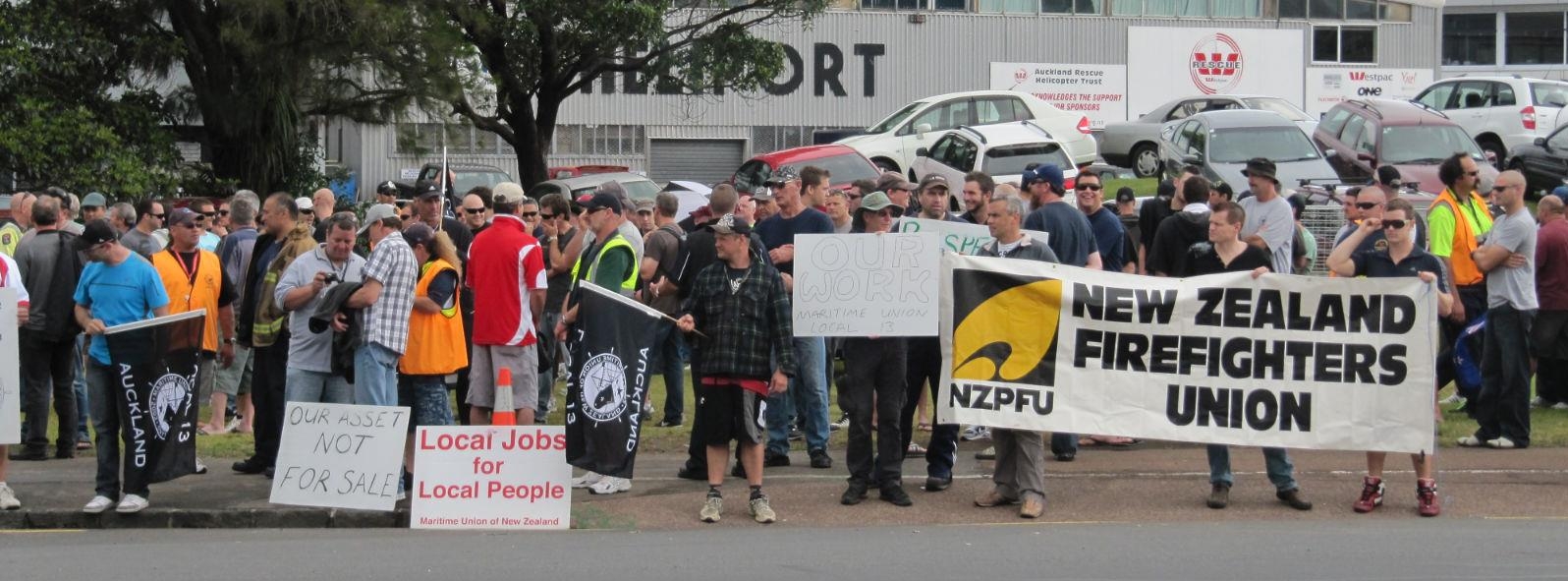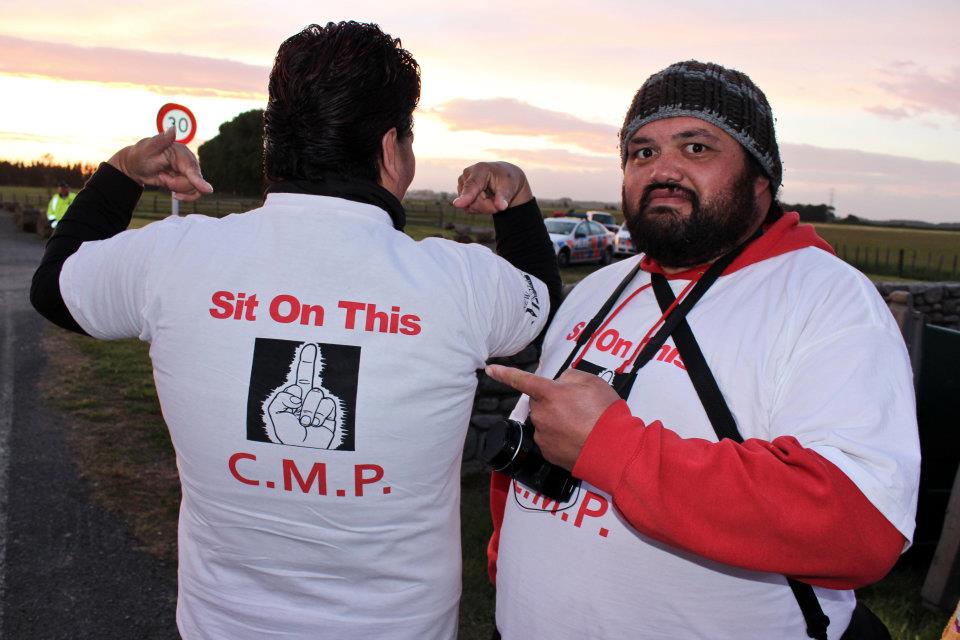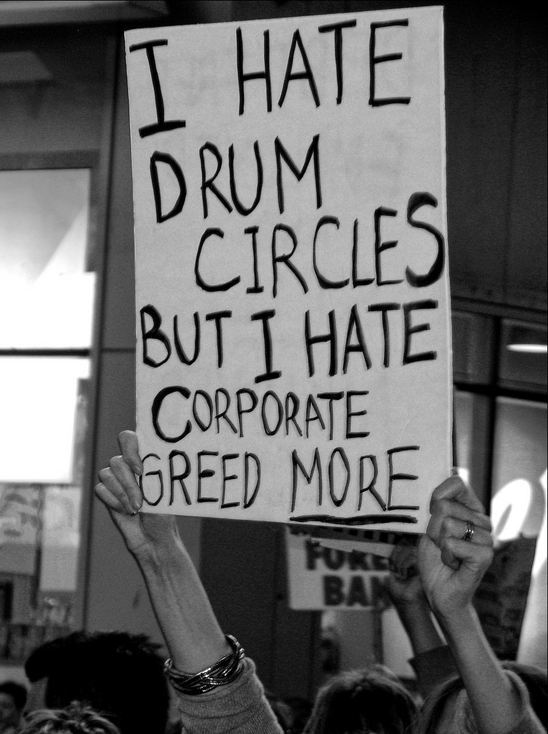From the December-January issue of The Spark.For a longer piece on the Mana Party in the election, see this article.
The Key Factor: PR and The National Party
 Novembers’ election saw a narrow victory for the National Party and its allies. Compared to their 2008 result, National saw their vote drop by about 10%- over 95,000 votes. They only received such a large share of the vote because Labours dropped even more- an enormous 255,000. ACT went from 5 MPs to 1, who would have been gone too if not for winning Epsom- the country’s richest electorate with the lowest Maori population. The Greens and NZ First were the only parties in parliament that grew their vote from 20081. 1 in 4 people did not vote. Continue reading “2011 General Election Analysis”
Novembers’ election saw a narrow victory for the National Party and its allies. Compared to their 2008 result, National saw their vote drop by about 10%- over 95,000 votes. They only received such a large share of the vote because Labours dropped even more- an enormous 255,000. ACT went from 5 MPs to 1, who would have been gone too if not for winning Epsom- the country’s richest electorate with the lowest Maori population. The Greens and NZ First were the only parties in parliament that grew their vote from 20081. 1 in 4 people did not vote. Continue reading “2011 General Election Analysis”
Firefighters and Port Workers Continue Struggle

There are significant labour struggles going on with firefighters and port workers. Firefighters have been taking industrial action since August 5th. “They are still carrying out emergency response work, firefighter safety work and public safety work but not general duties.” Auckland union president Mike McEnaney told Stuff.co.nz. The professional fire service is strongly unionised- with 99% of New Zealands paid firefighters.
While no ones saftey is put at risk by the industrial action being taken, it has had an impact. The Herald reported a “media black out on emergency news” as reports from the control room are not being sent to media organisaions. Reports are also not being supplied to insurance companies and bills related to fires are not being sent out. Continue reading “Firefighters and Port Workers Continue Struggle”
Australia: Baiada Workers Win Strike
Originally posted by the Socialist Party of Australia.
Workers at Baiada Poultry, Australia’s largest chicken supplier, have won their dispute with management after a 13 day strike. The workers stared down bullying, intimidation and police violence without any sign of wavering. It was this determination that forced this rouge employer to retreat and concede to the bulk of their demands.
Primarily the workers were fighting for a union agreement which included a decent pay rise, job security and improvements to health and safety – particularly they wanted an end to the constant bullying and harassment that takes place on a daily basis.
ANZCO Lockout Ends
 On Thursday the 22nd of December, after nearly 3 months locked out, workers at meatworks ANZCO-CMP Rangitikei voted to return to work.
On Thursday the 22nd of December, after nearly 3 months locked out, workers at meatworks ANZCO-CMP Rangitikei voted to return to work.
A corporation jointly owned by New Zealand and overseas investors, ANZCO aimed to cut costs and smash the Meat Workers Union. A week before the lockout began, letters were sent to all union members onsite demanding they accept pay cuts of 20-30%, and leave the union, before returning to work. While a significant number accepted the pay cuts, 111 workers refused, including many of the skilled workers onsite. The union took a position of accepting 10% pay cuts which the company did not accept.
The decision to stand strong against a brutally exploitative local corporation inspired nationwide solidarity efforts. While the Maritime Union was the only major union to make significant financial contributions from the start, community efforts as far south as Invercargill and as far north as Whangarei raised up to $46,000 p/w, exceeding the CTU target of $25,000. Even this number was meagre when divided up between families, but solidarity efforts did a lot to boost morale.
After negotiations repeatedly broke down, Council of Trade Unions head Helen Kelly was drafted in to mediate. Just before Christmas, the negotiating team recommended a deal with reduced pay-cuts and without some of the former cuts to conditions. With the site becoming increasingly split, workers voted to return.
We will publish an analytical article in the February edition of the Spark. In the coming months it is crucial that radicals consider and debate the significance of this struggle.
Mana in the election
Mana held Tai Tokerau for Hone Harawira and achieved 1% of the party vote, a respectable outcome, considering that the movement was launched just seven months ago, with bugger all money, and that the Labour and Māori Parties colluded to try and strangle it at birth. Mana won 12.7% of the Māori votes, and gained more votes than the ACT Party. The campaign that we ran was a refreshing display of left wing unity between Tino Rangatiritanga activists, Workers Party, Socialist Aotearoa, Socialist Worker, ISO and others. Mana is on the map.
But Mana was unlikely to repeat the success of the Māori Party when it was launched in 2004. For a start, there was no hikoi this time, and of course, Mana did not have the backing of the Brown Table. Mana also failed to make a real breakthrough into the Pasefika and working class Pākehā communities, perhaps because it was perceived to be a party exclusively for tangata whenua, like the Māori Party.
Continue reading “Mana in the election”
Video: Marama Davidson on Occupy Auckland
Occupied Dominion Post: Lockout and Occupation
by Ian Anderson, originally published in Occupied Dominion Post Issue 5
 On the 15th of October 2011, comrades in around 1500 cities rallied together on a global day of action inspired by Occupy Wall Street, resisting corporate greed. Four days later on the 19th of October, local corporation ANZCO locked out 111 union members at its CMP plant in Marton, demanding that they accept pay cuts of 20-30% before returning to work. The lockout and the occupation have each lasted nearly two months, and bonds of solidarity are forming.
On the 15th of October 2011, comrades in around 1500 cities rallied together on a global day of action inspired by Occupy Wall Street, resisting corporate greed. Four days later on the 19th of October, local corporation ANZCO locked out 111 union members at its CMP plant in Marton, demanding that they accept pay cuts of 20-30% before returning to work. The lockout and the occupation have each lasted nearly two months, and bonds of solidarity are forming.
ANZCO embodies the disparity in power and wealth which occupiers seek to redress. The company posts turnover of over $1.3bn. Sir Graeme Harrison, Chairman of the Board, was recently knighted and lives comfortably on Oriental Parade. All of this wealth is produced at plants such as CMP Rangitikei, by the workers currently under threat.
ANZCO is jointly owned by local capitalists and overseas investors. Its tactic of cutting wages to stay competitive is typical of recent trends; real wages in New Zealand have declined 25% over the past 3 decades. Many workers at CMP Rangitikei raise families, and can’t afford to have their wages cut by 30% in a period of rising prices.
However ANZCO is not just attempting to cut costs, they are also attempting to undermine our collective power. Before issuing the lockout notice, the company individually contacted many workers and offered them individual (rather than collective) contracts, in exchange for keeping their jobs. This is an attempt to smash the Meat Workers Union itself. However the dispute plays out, it will send an important signal to organized labour, to protest movements, and to the 1%. We cannot afford to let them take our collective power, to pick us off.
Continue reading “Occupied Dominion Post: Lockout and Occupation”
Just a bunch of hippies?

Byron Clark
A man with long blonde dreadlocks leads a procession of about 140 other people down am almost carless street. The crowd is predominantly young, cosmopolitan in its make up, and colourful in its outfits. Some sort of parade? No, the blonde dredlocks are under a hardhat, which complements the high visibility jacket and steelcap boots. This man works as a labourer in Christchurch’s red zone, part of the highly casualised and underpaid workforce that has been demolishing damaged buildings and making the city safe for new ones. He has been asked by the others in the group to lead up front in his PPE gear to symbolise what the protest is about. Its Labour day, and Christchurch is experiencing its first Labour day march is years (possibly decades) and it was organised by the Occupy Movement.
At the end of the march an open mic is held. A university graduate talks about how he is working two jobs but still under a mountain of debt. A young woman talks about an injury she sustained as a result of understaffing in a previous workplace. A number of young workers tell similar stories, and a member of the Nurses Organisation tells the assembled crowd that she will do what she can to get her union to endorse this movement. Two other unions- Unite and the RMTU- already have.
While a number of different view points and ideologies are present in the occupy camps (and in the much larger groups that attend the protests they call) this movement is at its core one based on class. The occupy protesters around New Zealand have raised hundreds of dollars for the locked out meat workers employed by Canterbury Meat Packers, and in Christchurch a lively picket was held. The people who are camping in public spaces know which side they’re on when a company attempts to cut staff pay by 30% and uses a lockout to achieve this.
Continue reading “Just a bunch of hippies?”
Safer Spaces in the Occupy Together movement
article by Ian Anderson and Stacey Nylund, originally published in Issue 5 of the Occupied Dominion Post.
How can we be together in a unity that is not simplistic, that is not oppressive, that is rather complex and emancipatory?
-Angela Davis, Occupy Wall Street
 By occupying spaces in the middle of major cities, we all take risks. We’ve seen the women maced on Wall Street, the mounted division charging in on Occupy Melbourne; we’re aware that eviction is a possibility, relieved when it’s averted; these are necessary risks to make our statement.
By occupying spaces in the middle of major cities, we all take risks. We’ve seen the women maced on Wall Street, the mounted division charging in on Occupy Melbourne; we’re aware that eviction is a possibility, relieved when it’s averted; these are necessary risks to make our statement.
But there are other risks associated with this movement, internal rather than external threats. Reports of rape in Cleveland and Glasgow circulate online. Occupiers in Wellington debate how to react to the presence of fascists in the city, and potentially at the occupation itself. It’s become increasingly obvious that by including those who behave oppressively, we automatically exclude others.
Continue reading “Safer Spaces in the Occupy Together movement”
Elections: why bother?
The Workers Party is supporting Mana this election, after standing down from national elections. But why do 1 in 4 young people choose not to vote? Isn’t that a rational choice given the options? Can a capitalist Westminster system really represent the majority?
A socialist perspective on why we participate in elections, followed by kai & korero.
Tonight (Friday) 7pm
Newtown Hall (opposite Mediterranean Food Warehouse)


